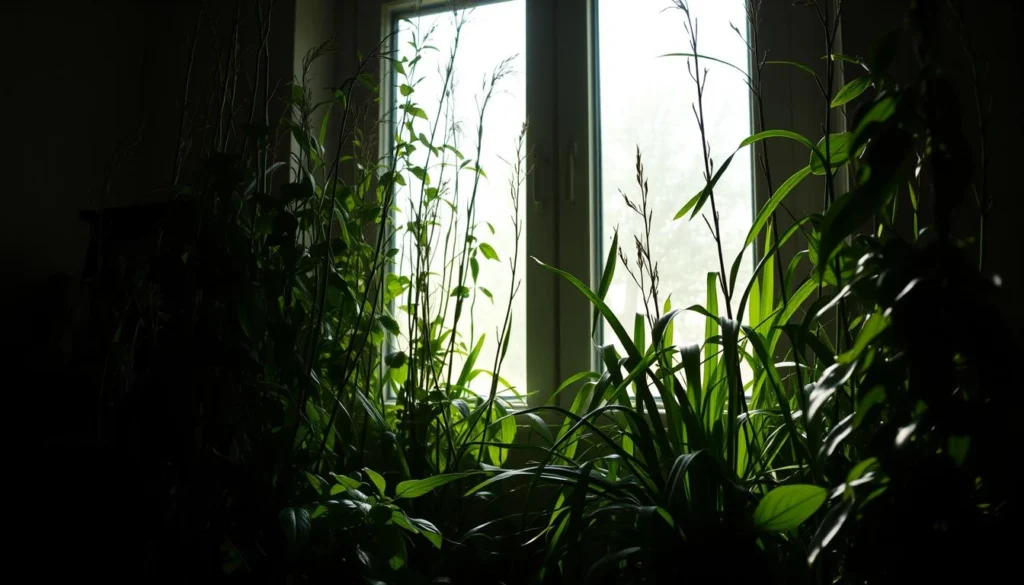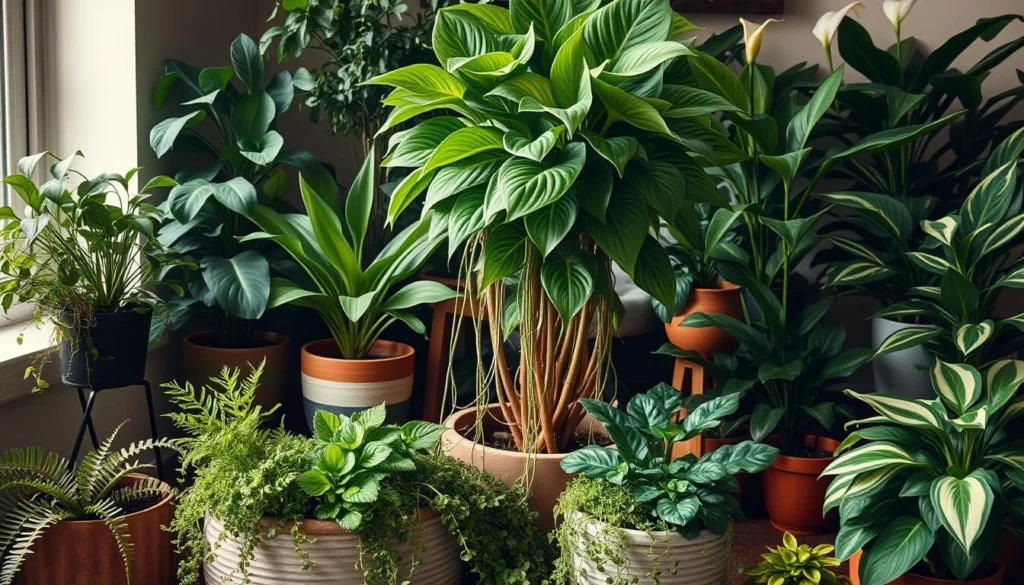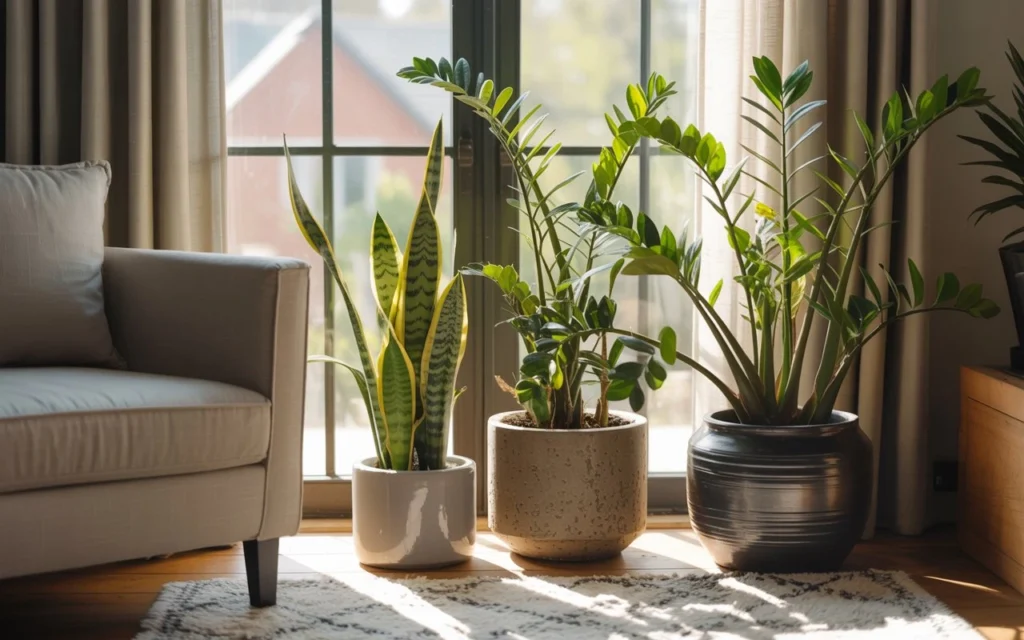
Do you have a gloomy corner, a north-facing room, or a hallway far from any window that feels perpetually forgotten? You dream of filling that space with vibrant, living greenery – something substantial, something that makes a statement – but worry that without abundant sunshine, it’s a lost cause. That frustrating gap between desire and perceived possibility is where many indoor gardeners get stuck.
The good news? You absolutely can cultivate a thriving indoor jungle, even in those challenging low-light areas! The secret lies in choosing the right botanical companions: resilient, adaptable large low light indoor plants. These leafy giants aren’t just survivors; they’re statement-makers capable of transforming dim, lifeless spaces into serene, lush sanctuaries. Forget the misconception that only small, sad plants tolerate shade. Let’s explore the best large-scale options that thrive where the sun rarely shines brightly.
Table of Contents
Understanding Low Light for Large Indoor Plants
What Exactly Defines Low Light for Your Large Indoor Plants?)
Before diving into our leafy lineup, it’s crucial to understand what “low light” means in the context of your home and for larger plants:
- No Direct Sunlight: These spots receive no direct rays from the sun through windows. Think areas several feet away from a north-facing window, corners opposite windows, or rooms with small windows shaded by buildings or trees.
- Ambient Light Only: Light is present but diffuse, often relying on reflected light from walls or other rooms.
- Dim Conditions: You could comfortably read a book here during the day without needing a lamp, but it feels shadowy rather than bright.
- Why Size Matters for Light Needs: Larger plants generally have more leaf surface area to capture available light. However, they also have greater metabolic needs. The plants we’ll cover have evolved strategies (like efficient photosynthesis or slow growth) to manage this balance in low-light conditions.
The Undeniable Benefits of Going Big in Low Light
Why Choose Large Low Light Indoor Plants Over Smaller Options?)
While petite plants have their charm, opting for larger specimens in dim areas offers unique advantages:
- Instant Impact & Focal Points: One large plant can anchor a room, define a space, and create a dramatic visual statement instantly. No waiting years for small plants to fill out.
- Improved Air Purification: Larger plants simply have more leaves! This translates to greater potential for filtering common indoor air pollutants (like formaldehyde, benzene, and xylene) – a well-documented benefit of many houseplants (referencing NASA Clean Air Study principles, though noting home environments differ).
- Enhanced Sense of Space & Scale: Tall plants draw the eye upward, making ceilings feel higher and rooms feel more expansive and intentional.
- Better Humidity Contribution: Through transpiration (releasing water vapor), larger plants can slightly increase local humidity levels, which benefits both the plant and nearby humans, especially in dry climates or heated rooms.
- Effective Space Fillers: They effortlessly fill awkward corners, bare walls, or large empty floor spaces that smaller plants can’t adequately address.
- Lower Maintenance (Often): Surprisingly, many large, low-light tolerant plants are also incredibly resilient and forgiving, requiring less frequent watering and fussing than some high-light divas.
Top Picks: Champion Large Low Light Indoor Plants
The Ultimate List of Large Low Light Indoor Plants)
Here are our top contenders, proven performers for bringing life to your dimmest spots:
1. The Unkillable Champion: ZZ Plant (Zamioculcas zamiifolia)
- Why it Shines: The ZZ Plant is legendary for its tolerance of extreme neglect, including very low light and infrequent watering. Its glossy, dark green leaflets grow on graceful, arching stems.
- Growth Habit: Upright, architectural. Can reach 2-4 feet tall indoors, sometimes taller over many years. Slow grower.
- Light Needs: Thrives in very low light to bright indirect light. Avoid direct sun.
- Care Tips: Water only when the soil is completely dry – it stores water in its potato-like rhizomes. Overwatering is its main enemy. Tolerates dry air. Dust leaves occasionally.
- Style Vibe: Modern, minimalist, sleek. Perfect for offices, bedrooms, or dark corners needing structure.
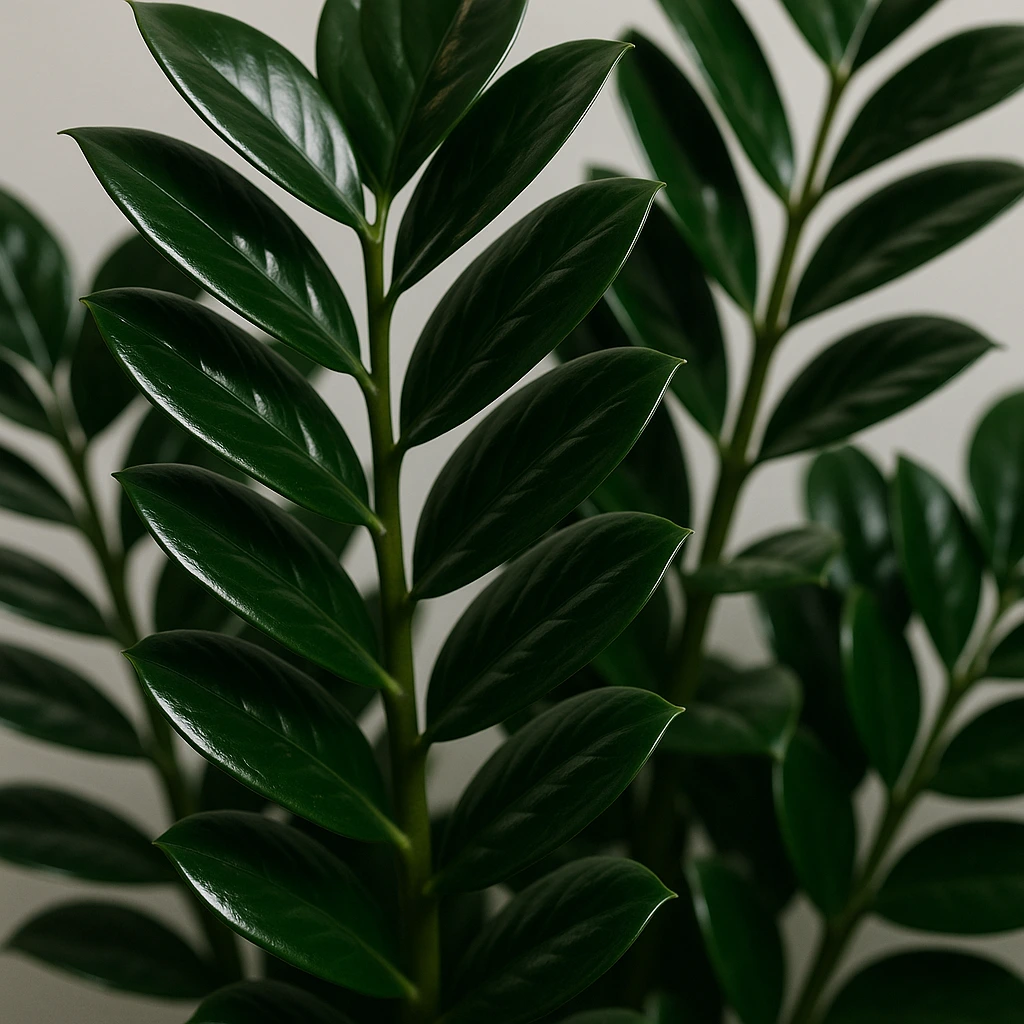
2. The Architectural Stunner: Snake Plant / Mother-in-Law’s Tongue (Dracaena trifasciata, formerly Sansevieria)
- Why it Shines: Incredibly tough, air-purifying, and comes in dramatic tall varieties like ‘Laurentii’ (yellow edges), ‘Bantel’s Sensation’ (white vertical stripes), or the robust ‘Futura Superba’. Their vertical growth is perfect for tight spaces.
- Growth Habit: Upright, sword-like leaves. Tall varieties easily reach 3-4+ feet.
- Light Needs: Highly adaptable, tolerating very low light to bright indirect light. Grows slower in low light.
- Care Tips: Water infrequently, allowing soil to dry deeply between waterings. Thrives on neglect. Prefers being slightly rootbound.
- Style Vibe: Bold, sculptural, mid-century modern. Excellent for hallways, bedrooms (releases oxygen at night!), or as a dramatic focal point.
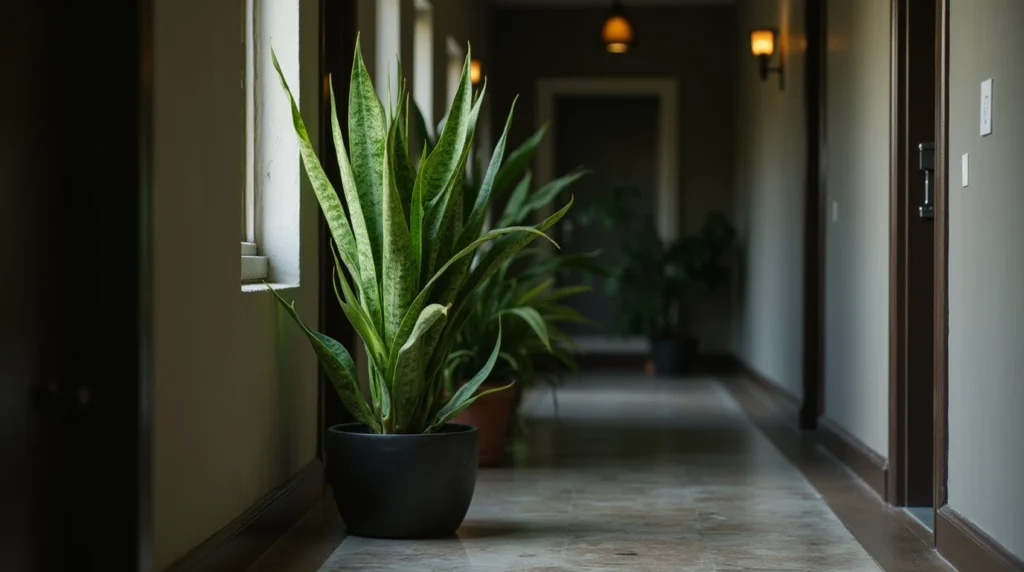
3. The Timeless Classic: Cast Iron Plant (Aspidistra elatior)
- Why it Shines: Lives up to its name! Extremely tolerant of low light, temperature fluctuations, dust, and irregular watering. Its broad, dark green, lance-shaped leaves grow directly from the soil.
- Growth Habit: Clumping, upright leaves. Grows slowly but steadily to 2-3 feet tall and wide.
- Light Needs: Prefers low to medium indirect light. Direct sun scorches leaves.
- Care Tips: Water when the top few inches of soil feel dry. Tolerates under-watering better than over-watering. Wipe leaves occasionally to keep them glossy.
- Style Vibe: Victorian elegance, lush, tropical. Ideal for traditional settings, dim dining rooms, or shaded foyers. Variegated varieties exist but need slightly more light.

4. The Lush Tropical: Lady Palm (Rhapis excelsa)
- Why it Shines: Offers elegant, fan-shaped leaves on multiple slender trunks. It’s surprisingly adaptable to lower light and brings a sophisticated, tropical feel.
- Growth Habit: Clumping, multi-stemmed palm. Grows slowly to 6-8 feet indoors over many years (often sold at manageable heights like 4-5 ft).
- Light Needs: Prefers bright, indirect light but adapts remarkably well to low light conditions. Avoid harsh direct sun.
- Care Tips: Keep soil consistently moist but never soggy. Appreciates higher humidity (mist occasionally or use a pebble tray). Prefers well-draining soil. Sensitive to fluoride/chlorine – use filtered or rainwater if tips brown.
- Style Vibe: Elegant, tropical, Asian-inspired. Perfect for living rooms, offices, or bathrooms (if humidity is decent).
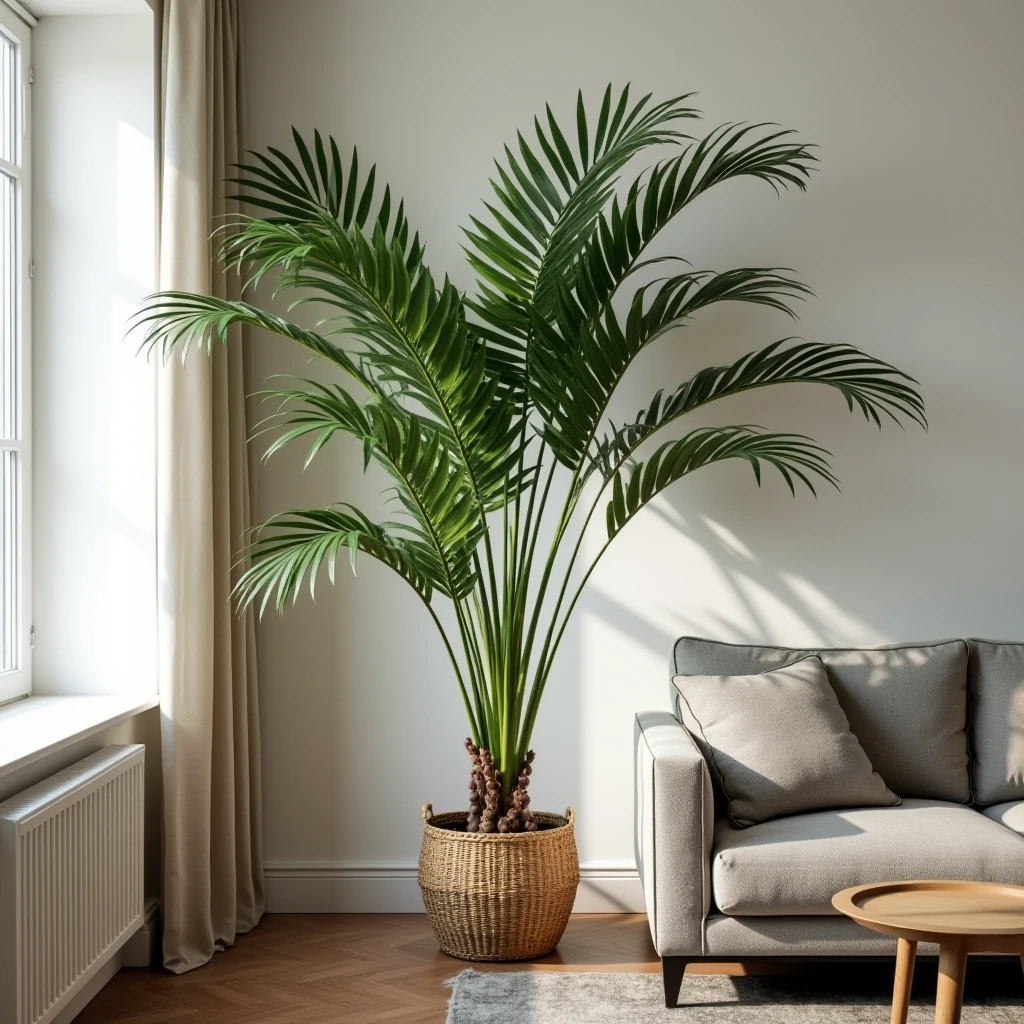
5. The Dramatic Focal Point: Dragon Tree (Dracaena marginata, Dracaena fragrans ‘Massangeana’ – Corn Plant)
- Why it Shines: Tall, tree-like structure with striking foliage. Dracaena marginata has thin trunks and grass-like leaves with red edges. Dracaena fragrans ‘Massangeana’ (Corn Plant) has broader, arching leaves with a central yellow stripe. Both are excellent low-light options.
- Growth Habit: Upright, woody canes with tufts of leaves at the top. Can reach ceiling height over time (often pruned/maintained at desired height).
- Light Needs: Adaptable, tolerating low to bright indirect light. Leaf variegation is more pronounced with more light, but they survive well in lower light.
- Care Tips: Water when the top 1-2 inches of soil are dry. Sensitive to fluoride/over-fertilizing (can cause leaf tip burn). Tolerate average humidity.
- Style Vibe: Modern, architectural, adds height. Marginata suits contemporary spaces; Corn Plant has a softer, more tropical feel. Great for corners behind furniture.
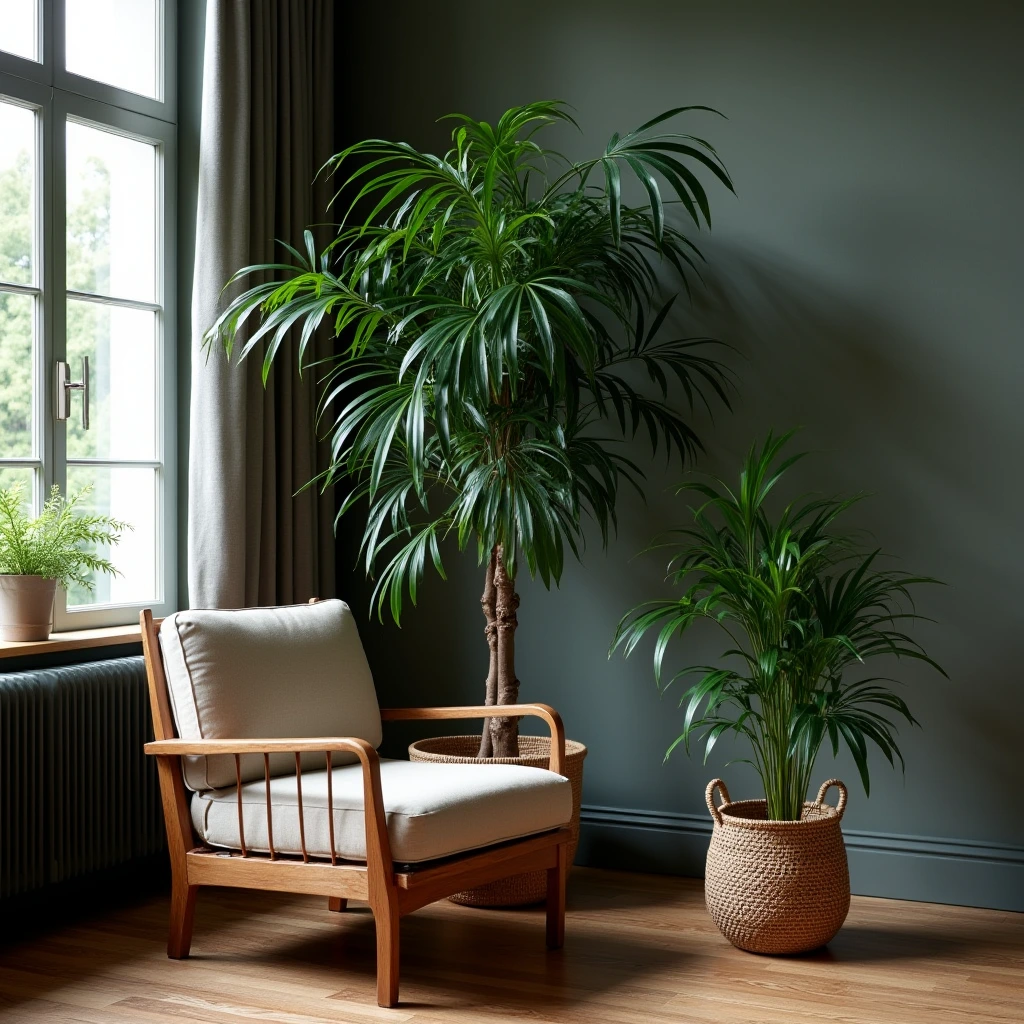
Honorable Mentions: Other Large Low Light Contenders)
- Peace Lily (Spathiphyllum spp.): While often medium-sized, some cultivars (like ‘Sensation’) can get quite large (3-4 ft). Loves low light and tells you when it needs water (dramatic droop!). Bonus: white blooms. Needs consistent moisture.
- Philodendron ‘Hope’ (Philodendron bipinnatifidum ‘Hope’): A more compact, manageable form of the Selloum. Large, deeply lobed, glossy leaves on a self-heading plant (doesn’t vine). Tolerates low light well. Appreciates humidity.
- Bird of Paradise (Strelitzia nicolai – White Bird): While it prefers bright light, it tolerates lower light surprisingly well, especially the larger Strelitzia nicolai. Growth will be much slower and blooming unlikely, but its huge, banana-like leaves make a massive statement. Needs more space.
- Kentia Palm (Howea forsteriana): A step up in light needs from the Lady Palm (prefers medium indirect), but it can adapt to lower light, growing very slowly. Prized for its graceful, arching fronds.
Essential Care Guide for Large Low Light Plants
Keeping Your Large Low Light Indoor Plants Thriving)
Choosing the right plant is half the battle. Proper care ensures they don’t just survive, but flourish:
Watering Wisdom: Less is Often More)
- The Golden Rule: Overwatering is the #1 killer of houseplants, especially in low light where soil dries slower. Err on the side of underwatering.
- Check the Soil: Always check the soil moisture before watering. Stick your finger 1-2 inches deep. For most large low-light plants (especially ZZ, Snake Plant, Cast Iron), water only when the top 50-75% of the soil is dry. For palms and Peace Lilies, water when the top 1-2 inches feel dry.
- Water Thoroughly: When you do water, soak the soil completely until water runs out the drainage holes. Discard any water sitting in the saucer after 15-30 minutes.
- Seasonal Adjustment: Water much less frequently in fall and winter when growth slows and light levels drop further.
Feeding: Gentle and Infrequent)
- Low Demand: Plants in low light grow much slower, meaning they need less fertilizer.
- Dilute & Delay: Use a balanced, water-soluble houseplant fertilizer diluted to half or quarter strength. Apply only during the active growing season (spring and summer), no more than once a month, or even less (every 6-8 weeks).
- Winter Fast: Avoid fertilizing completely in fall and winter.
Soil and Repotting: Patience is Key)
- Well-Draining Mix: Essential! Use a quality potting mix designed for indoor plants, often containing perlite or orchid bark for aeration. Cactus/succulent mix works well for ZZ and Snake Plants.
- Repot Sparingly: Large low-light plants typically grow slowly. Repot only when truly rootbound (roots circling tightly, emerging from drainage holes, or plant dries out extremely fast). Usually every 2-4 years, sometimes longer. Only size up the pot by 1-2 inches in diameter.
- Best Time: Repot in spring or early summer when the plant is entering its growth phase.
Cleaning and Grooming: Let the Light In)
- Dust is the Enemy: Dust buildup on large leaves significantly blocks the already limited light. Wipe leaves gently with a damp cloth regularly (monthly is good).
- Pruning: Remove dead, yellowing, or damaged leaves at the base to keep the plant looking tidy and prevent potential pest/disease issues. Trim brown leaf tips with clean scissors if desired (cut following the natural leaf shape).
Styling Your Dim Spaces with Large Low Light Plants
Design Ideas for Large Low Light Indoor Plants)
Large plants in low light aren’t just biological; they’re design elements! Here’s how to maximize their impact:
- The Solo Statement: Let one spectacular large plant (like a mature Lady Palm, Corn Plant, or Bird of Paradise) be the undisputed star of a corner or beside furniture. Use a stylish pot that complements your decor.
- Group Therapy: Create a lush vignette by grouping 2-3 large low-light plants of varying heights and textures (e.g., a tall Snake Plant behind a Cast Iron Plant and a ZZ Plant). This adds depth and interest.
- Height Matters: Use tall plants (Snake Plant, Dragon Tree) to draw the eye upward in rooms with low ceilings or to frame doorways/archways.
- Texture Play: Combine the broad leaves of a Cast Iron Plant with the finer texture of a Lady Palm or the architectural rigidity of a Snake Plant.
- Pot Power: Elevate your plant with a beautiful container. Choose pots with clean lines for modern plants (ZZ, Snake) or textured/glazed pots for tropical vibes (Lady Palm, Cast Iron). Ensure pots have drainage holes!
- Strategic Placement: Frame a dark fireplace, fill an empty corner beside a bookcase, soften the edge of a room divider, or place a large plant behind a sofa or armchair. Use them to define different areas within an open-plan space.
- Reflect Light: Place a large plant near a mirror to bounce ambient light around and make the space feel brighter, benefiting both the plant and the room’s ambiance.
Avoiding Common Pitfalls with Large Low Light Plants
Mistakes to Avoid with Your Large Low Light Indoor Plants)
Even resilient plants can suffer from these common errors:
- Overwatering: The absolute biggest killer. Soggy soil leads to root rot, especially in cool, low-light conditions. Stick your finger in the soil!
- Underestimating Size: Research the mature size! That cute 1-foot plant could become a 6-foot giant. Ensure you have adequate space vertically and horizontally.
- Ignoring Drainage: Planting directly into pots without drainage holes is a recipe for disaster. Always use a pot with holes and a saucer.
- Over-fertilizing: Pushing growth with fertilizer in low light stresses the plant and can cause fertilizer burn. Less is more!
- Moving Too Often: Plants acclimate to their light conditions. Constantly moving a plant from low light to bright sun (or vice versa) causes stress. Find a suitable spot and leave it there.
- Not Cleaning Leaves: A thick layer of dust drastically reduces the plant’s ability to photosynthesize the limited light it receives.
- Giving Up Too Soon: Some plants, especially after moving or repotting, might drop a leaf or two as they adjust. Don’t panic and overcompensate with water or fertilizer. Be patient.
Seasonal Shifts & Expert Insights
Caring for Large Low Light Plants Through the Year & Pro Tips)
- Spring/Summer: This is their prime (albeit slow) growth time. Water slightly more frequently as soil dries a bit faster (but still check!). Apply diluted fertilizer sparingly. Good time to repot if needed. Increase leaf cleaning frequency.
- Fall/Winter: Growth slows significantly or stops. Drastically reduce watering – the soil will stay moist much longer. Stop fertilizing entirely. Protect from cold drafts near windows or doors. Grouping plants can slightly increase local humidity. Expect little to no new growth – this is normal.
- Expert Insight: Rotate Gently: While these plants tolerate low light, giving them a quarter turn every time you water (if accessible) helps ensure all sides receive some light and promotes more even growth, preventing leaning.
- Expert Insight: Patience is Paramount: Growth in low light is inherently slow. Don’t expect rapid results. Appreciate the plant for its current beauty and resilience. Slow growth often means less maintenance!
- Expert Insight: Light Assessment: Use a light meter app on your phone (basic ones are free) to get a rough idea of the light levels (in foot-candles or lux) in your intended spot over a few days. While not lab-grade, it helps compare spots. Most large low-light plants can manage in 50-250 foot-candles.
(FAQs)
- Q: Can any large plant survive in very low light?
A: Absolutely not. While the plants listed here are champions of low light tolerance, they still require some ambient light to survive. A completely dark closet is not suitable. True low-light plants need the minimal light found in dimly lit rooms, not utter darkness. - Q: Will my large low light plant ever grow?
A: Yes, but very slowly. Growth in low light is significantly reduced compared to plants in brighter conditions. Focus on keeping the plant healthy and appreciating its existing foliage rather than expecting rapid expansion. Some species, like the ZZ or Cast Iron plant, are naturally slow growers regardless. - Q: How often should I really water my large Snake Plant/ZZ Plant in a dark corner?
A: Much less often than you think! In low light, especially during winter, you might only need to water every 4-8 weeks, or even longer. Always check the soil: For Snake and ZZ plants, wait until the soil is completely dry throughout the pot before watering thoroughly. When in doubt, wait another week. - Q: The leaf tips on my Dracaena are turning brown. What’s wrong?
A: Brown leaf tips are very common on Dracaenas (Dragon Tree, Corn Plant) and are usually caused by one of three things related to water: 1) Fluoride/Chlorine Sensitivity: Use filtered, distilled, or rainwater. 2) Underwatering: While they like to dry out slightly, prolonged dryness can cause tips to brown. 3) Low Humidity: Try misting occasionally or using a pebble tray. Trim the brown tips off neatly if desired. - Q: Can I put a large low light plant in my windowless bathroom?
A: It depends on the bathroom. If it’s used frequently and has decent artificial light left on for several hours a day (especially bright overhead lighting), some very tolerant plants might survive (like a ZZ or Cast Iron plant), but they won’t thrive. They need periods of darkness too. Plants truly need a light/dark cycle. A bathroom with no natural and very little artificial light is not suitable. Consider supplementing with a grow light if you desperately want greenery in a truly dark bathroom.
Conclusion:
Dim spaces in your home don’t have to be barren or uninspired. By choosing the right large low light indoor plants – the resilient ZZ Plant, the sculptural Snake Plant, the elegant Lady Palm, the timeless Cast Iron Plant, or the dramatic Dragon Tree – you can infuse these areas with life, texture, and undeniable style. Remember the keys to success: master the art of infrequent watering, resist the urge to over-fertilize, choose a well-draining pot, keep those leaves dust-free, and above all, practice patience. These botanical giants are built for endurance, rewarding you with years of lush greenery that transforms challenging corners into your favorite cozy, verdant retreats.
Ready to banish the gloom? Which of these large low light champions are you most excited to welcome into your home? Have you had success with another large plant in a dim spot? Share your experiences, photos, and questions in the comments below – let’s grow our low-light jungle together!
